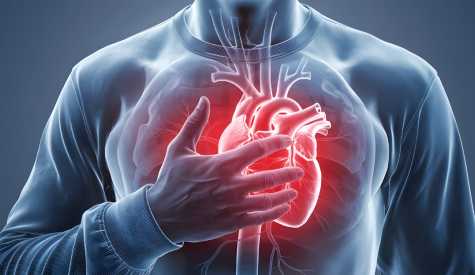What is the Pediatric Chain of Survival?

The pediatric chain of survival outlines a series of steps and interventions designed to maximize the chances of saving a child’s life. Understanding the pediatric chain of survival empowers parents, caregivers, bystanders and medical professionals to respond quickly and confidently — ensuring the best possible outcomes for children in cardiac arrest emergencies.
Cardiac arrest in children: Secondary vs. sudden cardiac arrest
Sudden cardiac arrest occurs when the normal electrical impulses in the heart cause it to beat too quickly, inefficiently, or in an unsynchronized manner. It’s caused by a problem with the heart itself.
But pediatric cardiac arrest is rare considering most children have healthy hearts. When it does happen, it’s most commonly a result of asphyxia, which is a lack of oxygen that occurs when breathing slows or stops. This lack of oxygen causes the heart to stop within minutes.
Because the heart stops secondary to a lack of oxygen, it’s referred to as secondary cardiac arrest.
What causes secondary cardiac arrest in children? Common causes include:
- Airway obstruction
- Lung infections or diseases
- Drowning
- Choking
Additionally, children may experience secondary cardiac arrest from shock resulting from car accident injuries, burns, falls and child abuse.
Importance of rescue breaths for children and infants
Rescue breaths are extremely important for children and infants because cardiac arrest typically occurs from asphyxia. Therefore, getting oxygen into the body is critical. Rescue breathing helps stimulate the heart to beat faster and stronger, pushing oxygenated blood to the brain and encouraging the breathing effort.
All trained CPR providers should use conventional CPR (meaning a combination of chest compressions and rescue breathing) if they’re willing and able. However, untrained bystanders can still make a difference by performing compression-only CPR, also known as hands-only CPR.
Pediatric chain of survival in action
The pediatric chain of survival consists of six interdependent links that describe the best approach to cardiac arrest care for children and infants.

Just like with the adult chain of survival, the best chance of survival exists when all links are strong.
Bystanders play a crucial role in the first three links of the pediatric chain of survival:
- Prevention of cardiac arrest. Safety-focused strategies, such as using safety equipment, creating safe environments and actively supervising, can help prevent pediatric cardiac arrest.
- Prompt activation of emergency response. Calling 911 activates first responders in your area.
- Immediate high-quality CPR and early defibrillation. Early CPR provides oxygen to the heart, brain and other vital organs. Having access to an automated external defibrillator (AED) can deliver an electric shock to restore the heart’s normal contractions before emergency medical services arrive.
The final three links include advanced resuscitation, effective post-cardiac arrest care at a hospital and recovery. First responders and health professionals lead these efforts, including guiding family members on best practices for recovery support after hospital discharge.
Prevention is key to reducing pediatric cardiac arrest
The first link in the pediatric chain of survival, prevention, can significantly reduce the number of pediatric cardiac arrests from asphyxia. This includes preventing drowning and choking, as well as ensuring you’re using essential safety equipment and appropriate supervision.
For example, you can increase the safety measures around your backyard pool by installing pool fencing, pool alarms, door and gate alarms, and pools covers.
Other preventative measures include using child passenger safety seats correctly and encouraging your children to wear bicycle helmets when riding.
How to perform pediatric CPR
Follow these bystander CPR steps for an unresponsive child (one year of age to puberty) who isn’t breathing normally or at all.
- Call 911 to activate EMS. Send someone to get the first aid kit and AED.
- Place one or both hands on the center of the chest. For a small child, one hand might be enough.
- Push hard, straight down. Aim for compressions that reach a depth of at least two inches.
- Push fast. Aim for a rate of 100-120 compressions per minute.
Continue pushing hard and fast until another bystander or EMS provider takes over, or until the child starts normal breathing, moving or reacting in other ways.
If you’re a trained CPR provider, perform 30 chest compressions, counting out loud. Then, use a CPR mask to give two rescue breaths. Continue repeating cycles of 30 compressions and two breaths.
How to perform chest compressions for an infant
If the child is younger than 12 months, you’ll follow similar steps as child CPR. But you’ll need to adjust your hand placement to account for their smaller size.
To give infant chest compressions, use one of the following hand-positioning techniques:

The “heel of one hand technique” shown above can be useful for larger infants. It can also make it easier to provide high-quality chest compressions if you aren’t able to compress the chest to approximately 1.5 inches using your fingers or thumbs.
Get CPR, AED and First Aid certified
Each link in the pediatric chain of survival is essential for the most positive outcome. If a single link is missing, the chances of survival are greatly reduced.
As a lay rescuer, you can make a huge difference in the pediatric survival rate by practicing prevention strategies, calling 911 when you see someone in need and getting CPR, AED and First Aid certified.
Learn how you can get training and full certification with an HSI CPR, AED and First Aid class.


